

How to vote in every state: a guide. Americans tend to think of voting as something you do on Election Day, a sacred democratic ritual: go to the polls, fill out your ballot in a booth, then wear an “I Voted” sticker to tout your civic virtue.
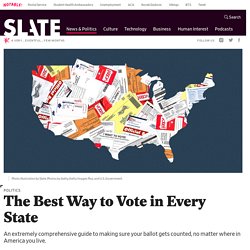
The reality is often messier than that, as we’ve seen every year in the hourslong lines, broken machines, and utter confusion at polling places across the country. In 2020, amid a pandemic, this ritual is not only ineffective—it may also be dangerous. Our ability to exercise the right to vote is under threat. President Donald Trump has assailed mail-in voting, even though it is safe, secure, and more popular than ever before. He has refused vital funding for the U.S. This guide is designed to help Americans vote—and make sure their ballots are actually counted. 7/16/20: Supreme Court just stopped 1 million Floridians from voting in November. The Supreme Court all but guaranteed that nearly 1 million Floridians will be unable to vote in the 2020 election because of unpaid court debts in a shattering order handed down on Thursday.
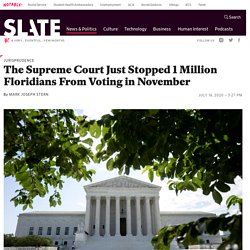
Its decision will throw Florida’s voter registration into chaos, placing a huge number of would-be voters in legal limbo and even opening them up to prosecution for casting a ballot. The justices have effectively permitted Florida Republicans to impose a poll tax in November. U.S. District Judge Robert Hinkle sharply limited the law’s scope in May.
4/8/20: Coronavirus Is Also Attacking the Ballot Box. The pandemic is a black light on America, bringing our imperfections into sharper relief.
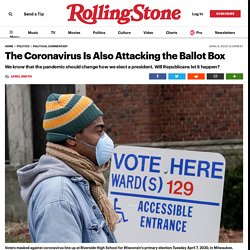
One of them is how we elect presidents. As I write, we are planning to do it the same way we always have come November, even though Americans will likely still be sick and dying throughout the country and voters could be risking their lives to cast a ballot. Some officials are trying to find better options for conducting the election; others are trying to stop them. 4/16/20: Harris’ Plan to Save the 2020 Election. No one should have ever had to risk her or his life to vote, as Wisconsin residents did last week.
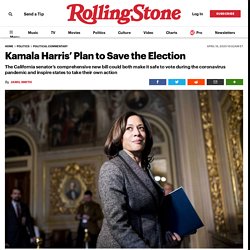
Republicans kept the election open against both Democratic Gov. Tony Evers’ wishes and the recommendations of public-health experts. Texas, for now, has avoided that fate. On Wednesday, a state court judge sided against Republican Secretary of State Ken Paxton and with the American Civil Liberties Union, ruling that any registered voter worried about contracting the coronavirus at an in-person voting site would be able to vote by mail. 3/4/20: TX Has Closed More Polling Stations Than Any Other State.
Who gets to vote?
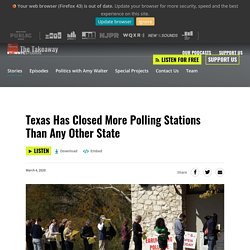
That question was supposed to have been decided by the Voting Rights Act back in the ’60s. But since 2013, people in the South lost at least 1,200 polling stations. According to a study by the Leadership Conference on Civil and Human Rights, the Supreme Court decision to invalidate part of the Voting Rights Act seven years ago contributed to the closures. WeVote App —Committee of Seventy. Vote411.org. HeadCount. The Many Varieties of Voter Suppression - The American Prospect.
This story was supported by the Pulitzer Center.
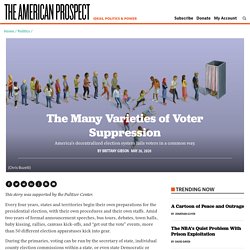
Every four years, states and territories begin their own preparations for the presidential election, with their own procedures and their own staffs. Amid two years of formal announcement speeches, bus tours, debates, town halls, baby kissing, rallies, canvass kick-offs, and “get out the vote” events, more than 50 different election apparatuses kick into gear. During the primaries, voting can be run by the secretary of state, individual county election commissions within a state, or even state Democratic or Republican parties, if they’re hosting a caucus.
US Voter Suppression 2018.
Engaging Young Voters. League of Women Voters. President @BarackObama doesn't have time for these 7 excuses not to vote.… Postcards To Voters. National Popular Vote Interstate Compact. Electoral College. 2016 Electoral College Concerns. The Constitution lets the electoral college choose the winner. They should choose Clinton. Lawrence Lessig is a professor at Harvard Law School and the author of “Republic, Lost: Version 2.0.”
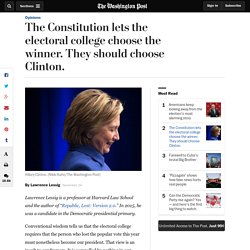
In 2015, he was a candidate in the Democratic presidential primary. Conventional wisdom tells us that the electoral college requires that the person who lost the popular vote this year must nonetheless become our president. The Electoral College Was Meant to Stop Men Like Trump From Being President. Americans talk about democracy like it’s sacred.

In public discourse, the more democratic American government is, the better. The people are supposed to rule. But that’s not the premise that underlies America’s political system. Most of the men who founded the United States feared unfettered majority rule. James Madison wrote in Federalist 10 that systems of government based upon “pure democracy … have ever been found incompatible with personal security or the rights of property.”
SMART Elections. 9/9/19: So. US states closed 1,200 polling places in recent years. Polling Place Closures and the Right to Vote. The surge in voting changes at the state and local level after the U.S.
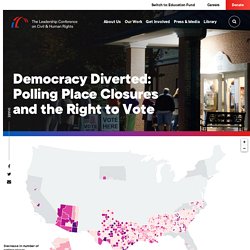
Supreme Court’s Shelby County v. Holder decision catalyzed a systemic examination of poll closures and other seemingly innocuous changes that could have negatively impacted voters of color. In 2016, The Leadership Conference Education Fund identified 868 polling place closures in formerly Section 5 jurisdictions in our initial report, The Great Poll Closure. This report, Democracy Diverted: Polling Place Closures and the Right to Vote, is both an update to — and a major expansion of — our original publication. Gerrymandering. America’s most gerrymandered congressional districts. Crimes against geography.
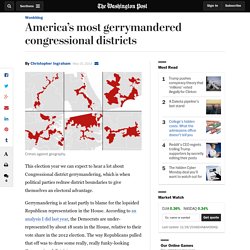
This election year we can expect to hear a lot about Congressional district gerrymandering, which is when political parties redraw district boundaries to give themselves an electoral advantage. Gerrymandering is at least partly to blame for the lopsided Republican representation in the House. According to an analysis I did last year, the Democrats are under-represented by about 18 seats in the House, relative to their vote share in the 2012 election. The way Republicans pulled that off was to draw some really, really funky-looking Congressional districts. This is the best explanation of gerrymandering you will ever see. Gerrymandering -- drawing political boundaries to give your party a numeric advantage over an opposing party -- is a difficult process to explain. $ in Politics: The Top 10 Things Every Voter Should Know.
As surely as water flows downhill, money in politics flows to where the power is. Individuals and interest groups will give campaign contributions to politicians in the best position to deliver what they're looking for. That means incumbents get vastly more than challengers, committee chairmen and legislative leaders get more than rank-and-file members, and parties in power get more than parties in the minority.
Incumbents vs. challengers Interest groups like safe bets, and in the political world nothing is so safe as giving money to a politician who's already in office. Re-election rates are so high that nearly all interest groups give an overwhelming majority of their campaign dollars to incumbents. Congressional committees. 2018 (US) Midterm Elections. US Voter Suppression 2018. 2016 POTUS Election. Gregory Shapiro on Instagram: “Jody Ray: "Didn't Vote is the actual president." #Trump #Obama #Hillary #2016 #usa”
US Elections. Democracy issues ~ How to steal an election - polling - russia - Cambridge Analytica - deep profiling.